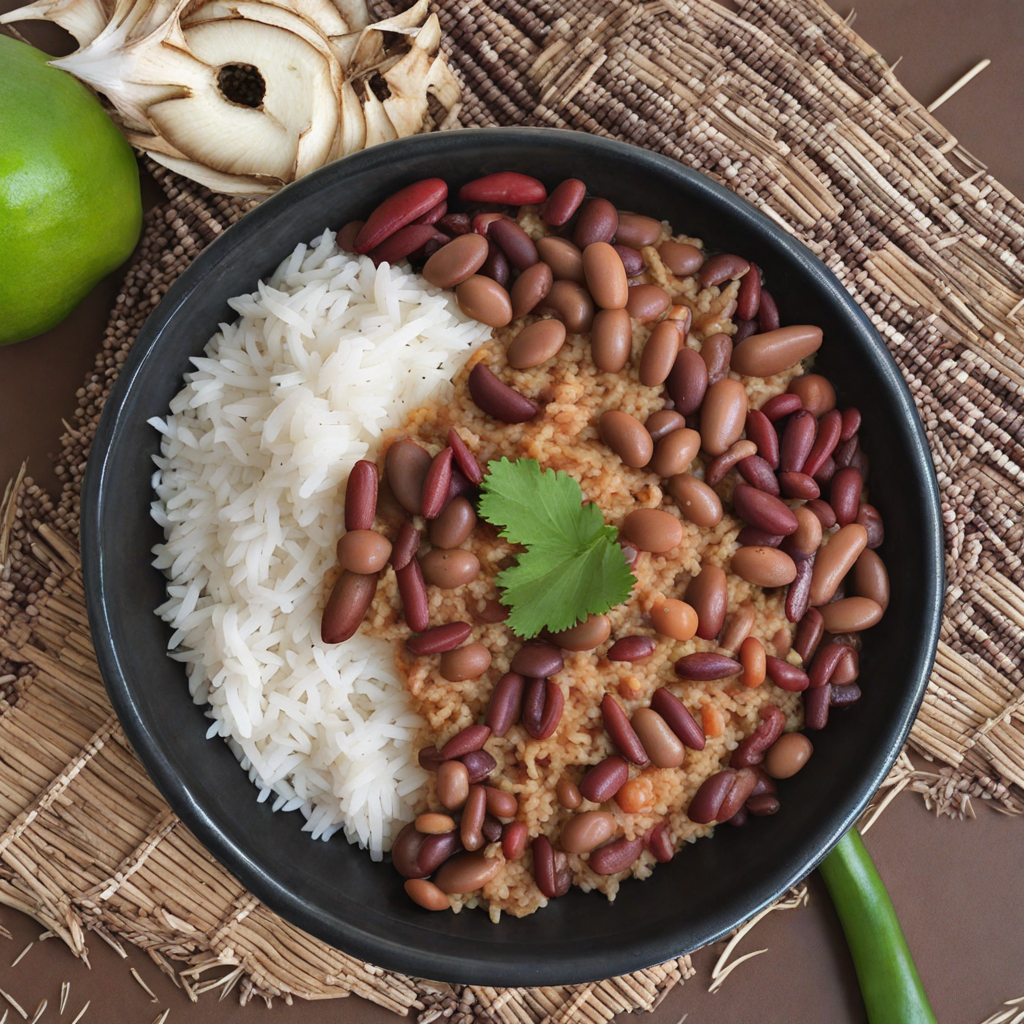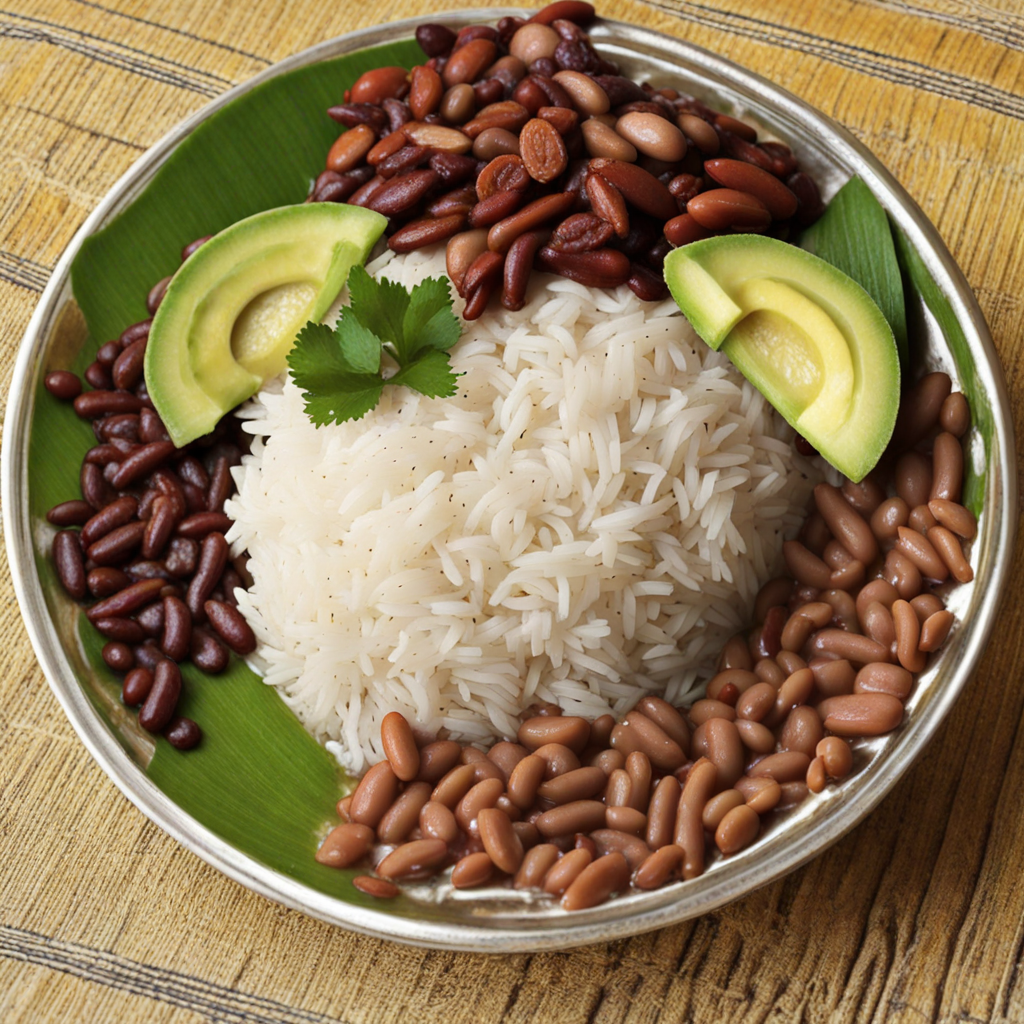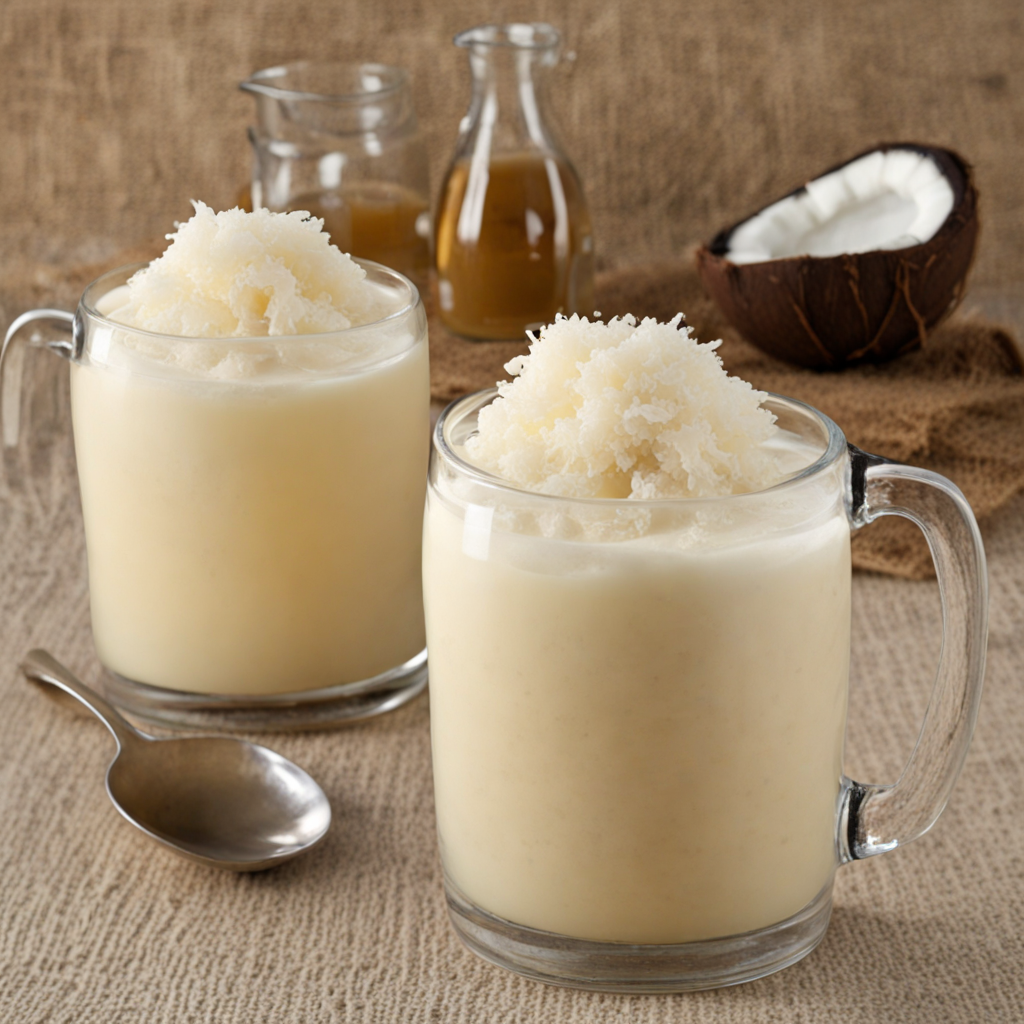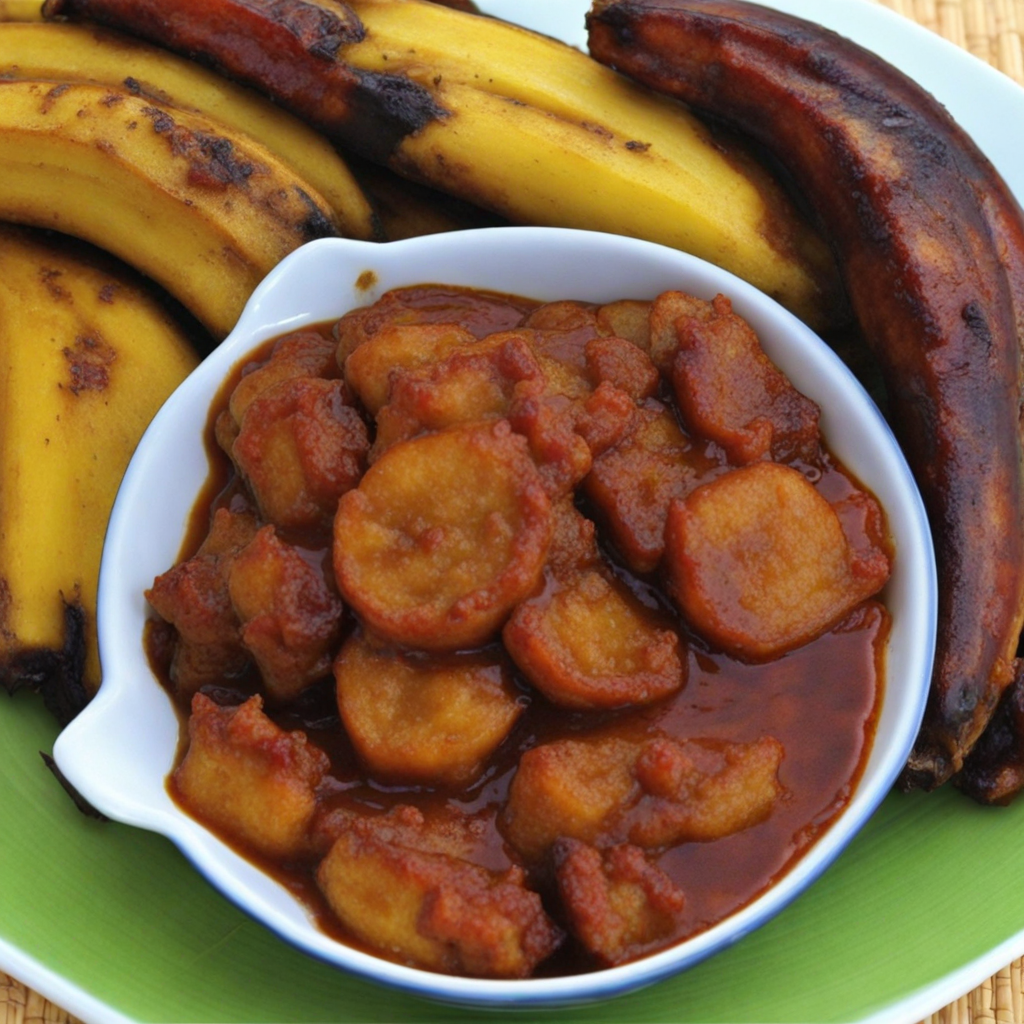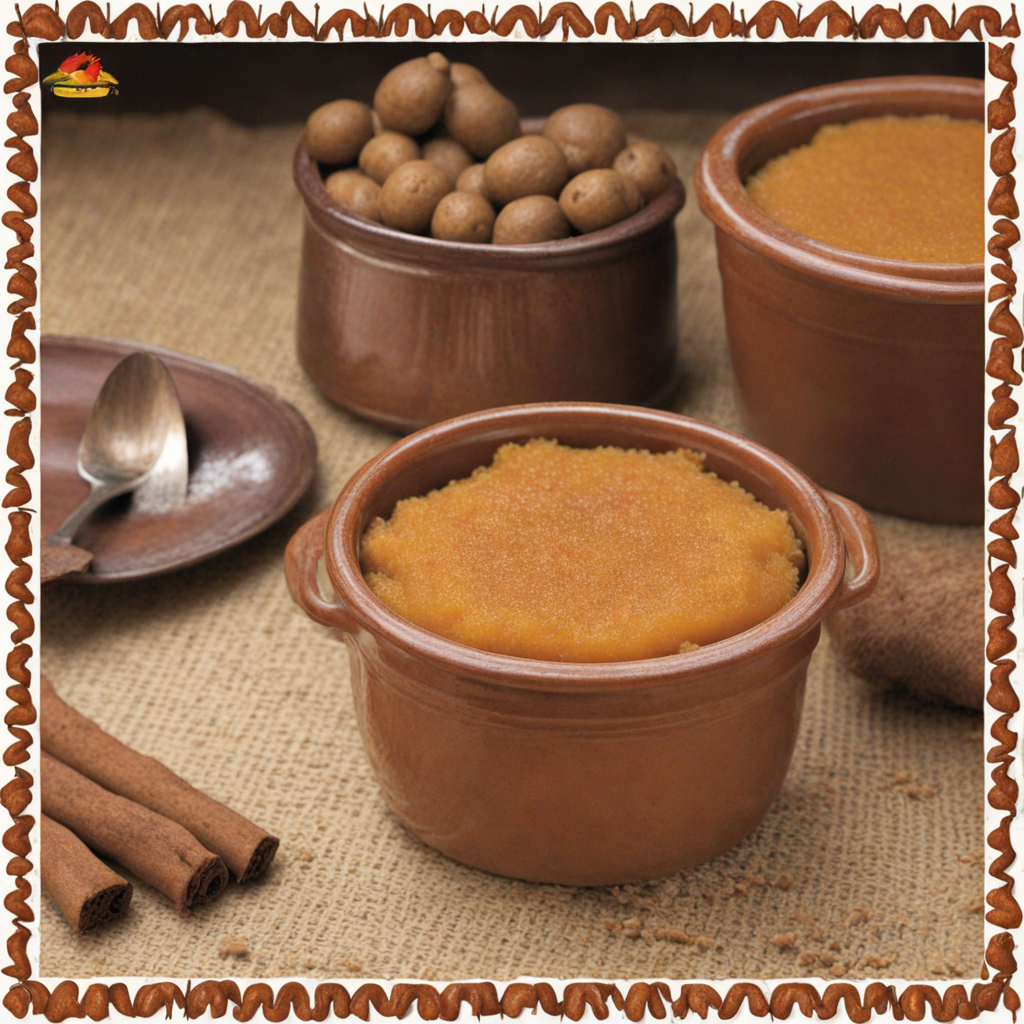Du Riz Cole a Pwa
Du Riz Cole a Pwa is a delightful Haitian dish that marries rice and beans in a harmonious blend of flavors and textures. The base of the dish consists of fluffy, steamed white rice, which serves as a canvas for the rich and earthy notes of the beans, typically black or red beans. The beans are cooked until tender and seasoned with a medley of spices, including garlic, thyme, and a hint of scotch bonnet pepper, which adds a gentle heat that characterizes much of Haitian cuisine. This combination creates a satisfying and comforting meal that is both nourishing and soul-soothing. The dish is often enhanced with the addition of sautéed vegetables like bell peppers, onions, and tomatoes, which contribute brightness and depth to the overall flavor profile. The vibrant colors of the vegetables contrast beautifully with the white rice and dark beans, making it as visually appealing as it is delicious. Traditionally, Du Riz Cole a Pwa is served with a side of fried plantains or a protein such as chicken or fish, creating a well-rounded meal that showcases the best of Haitian culinary traditions. To truly appreciate Du Riz Cole a Pwa, one must savor each bite, allowing the layers of flavor to unfold. The combination of creamy beans, aromatic rice, and zesty spices creates a unique taste experience that captures the essence of Haiti. Whether enjoyed as a main course or a side dish, Du Riz Cole a Pwa offers a wonderful introduction to the vibrant and diverse flavors of Haitian cuisine, inviting food lovers to explore the rich cultural heritage behind each ingredient.
How It Became This Dish
Du Riz Colé à Pwa: A Culinary Journey Through Haiti's Rich Tapestry In the heart of the Caribbean lies Haiti, a land steeped in vibrant culture, tumultuous history, and an extraordinary culinary legacy. Among the myriad of dishes that grace the tables of Haitian homes, "Du Riz Colé à Pwa," or rice and peas, stands out not only as a staple food but also as a symbol of resilience, community, and cultural identity. This beloved dish, often enjoyed during family gatherings, special occasions, and everyday meals, has a rich history that intertwines with Haiti’s agricultural practices, colonial past, and social fabric. Origins: A Fusion of Influences The origins of Du Riz Colé à Pwa can be traced back to the indigenous Taíno people, who were the first inhabitants of the island of Hispaniola, which includes modern-day Haiti and the Dominican Republic. The Taíno cultivated various crops, including cassava, maize, and beans, which would lay the groundwork for the region's agricultural identity. However, the dish's evolution was significantly influenced by the arrival of European colonizers in the 15th century and the subsequent introduction of African culinary traditions through the transatlantic slave trade. The Haitian Revolution (1791-1804), a monumental struggle that led to Haiti becoming the first nation to abolish slavery, played a pivotal role in shaping the country’s culinary landscape. Enslaved Africans brought to the island contributed their agricultural knowledge, cooking techniques, and a diverse array of ingredients. Rice, a staple in African diets, became a fundamental part of Haitian cuisine, particularly when paired with legumes, such as pigeon peas and black-eyed peas. As a result, Du Riz Colé à Pwa is not merely rice and peas; it is a dish that embodies a fusion of indigenous, African, and European influences, representing the complex narrative of Haiti's past and the resilience of its people. Cultural Significance: A Symbol of Togetherness In Haitian culture, food is much more than sustenance; it is a means of connection, celebration, and identity. Du Riz Colé à Pwa occupies a special place in this culinary landscape. It is often served at family gatherings, weddings, and religious ceremonies, where it brings people together in the spirit of sharing and community. The dish is typically accompanied by fried plantains, pikliz (a spicy pickled vegetable condiment), and meat or fish, creating a harmonious balance of flavors and textures. The preparation of Du Riz Colé à Pwa is often a communal affair, with family members coming together to wash, soak, and cook the rice and peas. This collaborative process reinforces familial bonds and creates a sense of belonging, as recipes are passed down through generations, each family adding its unique twist. The dish's versatility allows for variations, with different types of legumes and spices being employed, reflecting regional preferences and personal tastes. Moreover, Du Riz Colé à Pwa serves as a culinary ambassador of Haitian culture, especially in the diaspora. Haitian immigrants often prepare the dish to evoke memories of home and to share their heritage with new generations. It is a way of preserving cultural identity while simultaneously embracing the diversity of their new environments. Development Over Time: From Rural Roots to Urban Appeal As Haiti transitioned from its agrarian roots to urbanization, the role of Du Riz Colé à Pwa evolved. In rural communities, the dish was primarily made with locally sourced ingredients, often featuring fresh herbs and spices grown in home gardens. However, as cities expanded and access to fresh produce fluctuated, the dish began to adapt to new circumstances. In urban areas, the introduction of canned beans and pre-packaged seasonings made the dish more accessible to busy families. While this convenience sometimes compromised the traditional preparation methods, it also allowed Du Riz Colé à Pwa to maintain its status as a quick, nutritious meal. Street vendors and local restaurants began to offer their own takes on the dish, enriching its diversity and making it a staple for urban dwellers. Additionally, the rise of globalization and the internet has played a role in the dish's evolution. With the proliferation of food blogs and cooking shows, Du Riz Colé à Pwa has garnered attention beyond Haiti’s borders. Chefs and home cooks alike are exploring the dish's potential, experimenting with fusion recipes that incorporate international flavors while respecting its traditional roots. This newfound visibility has allowed the dish to gain recognition on a global scale, showcasing the richness of Haitian cuisine. Navigating Challenges: Food Security and Sustainability Despite its cultural significance, Du Riz Colé à Pwa also reflects broader challenges faced by Haiti, particularly concerning food security and sustainability. The country has endured political instability, natural disasters, and economic hardships that have impacted agricultural production and food availability. These challenges have made it increasingly difficult for families to access fresh ingredients, leading to reliance on imported goods and processed foods. In response to these issues, there has been a growing movement toward agricultural sustainability and food sovereignty within Haiti. Initiatives focusing on local farming, heirloom seeds, and traditional agricultural practices aim to revitalize local food systems and ensure that dishes like Du Riz Colé à Pwa can be prepared with fresh, locally sourced ingredients. This resurgence not only strengthens community resilience but also reinforces the cultural significance of the dish as a symbol of self-sufficiency. Conclusion: A Dish of Heritage and Hope Du Riz Colé à Pwa transcends the boundaries of a simple meal; it is a testament to Haiti’s rich history, cultural identity, and the enduring spirit of its people. The dish tells the story of resilience, unity, and adaptability in the face of adversity. As Haitians continue to navigate the complexities of modern life, Du Riz Colé à Pwa remains a beloved staple, a dish that nourishes not only the body but also the soul. Whether enjoyed at a festive gathering or a quiet family dinner, Du Riz Colé à Pwa connects generations, serving as a reminder that food is not just about what is on the plate, but about the stories, traditions, and love that accompany it. In every grain of rice and every pea lies a piece of Haiti's heart, an invitation to savor the past while embracing the future.
You may like
Discover local flavors from Haiti


